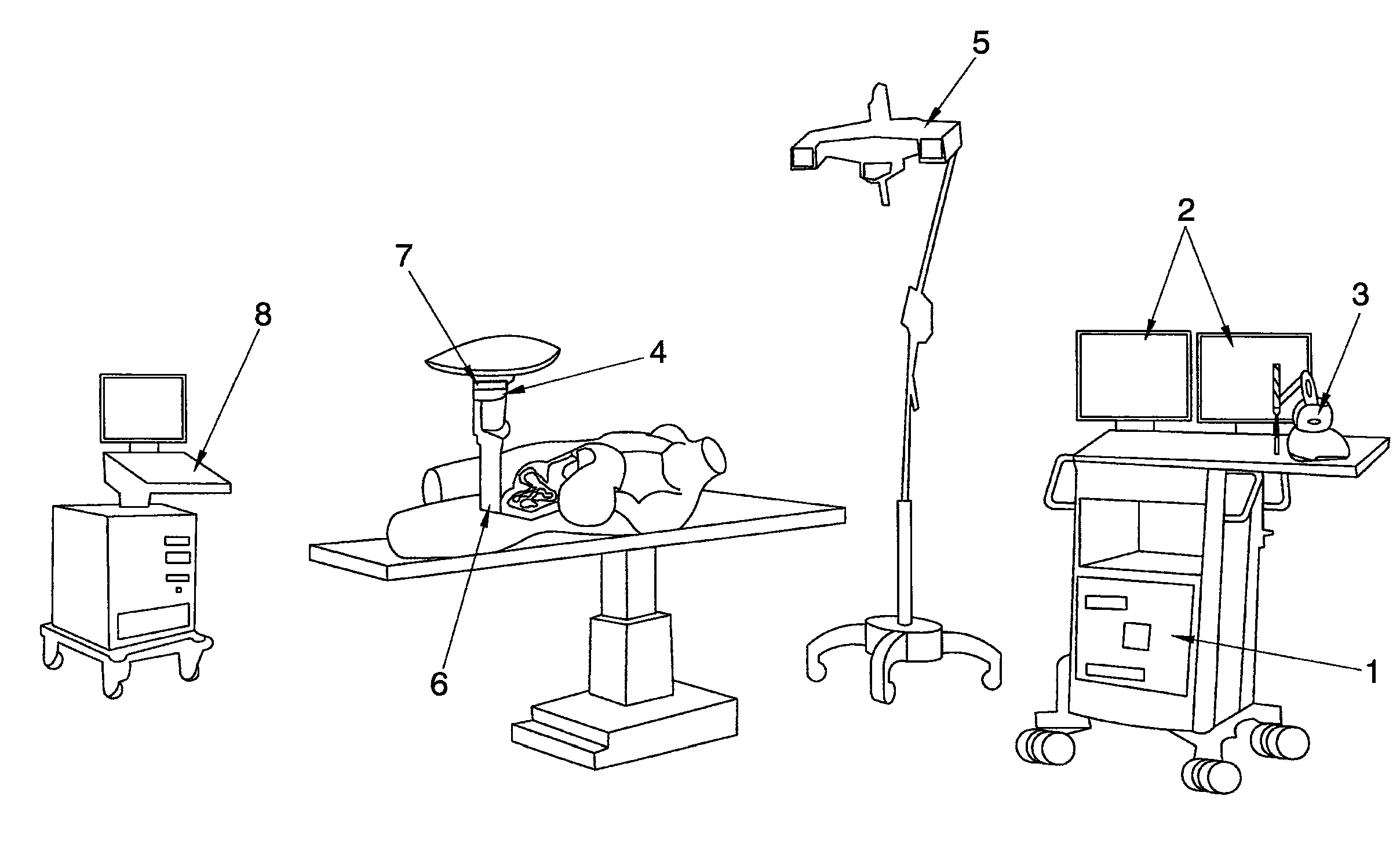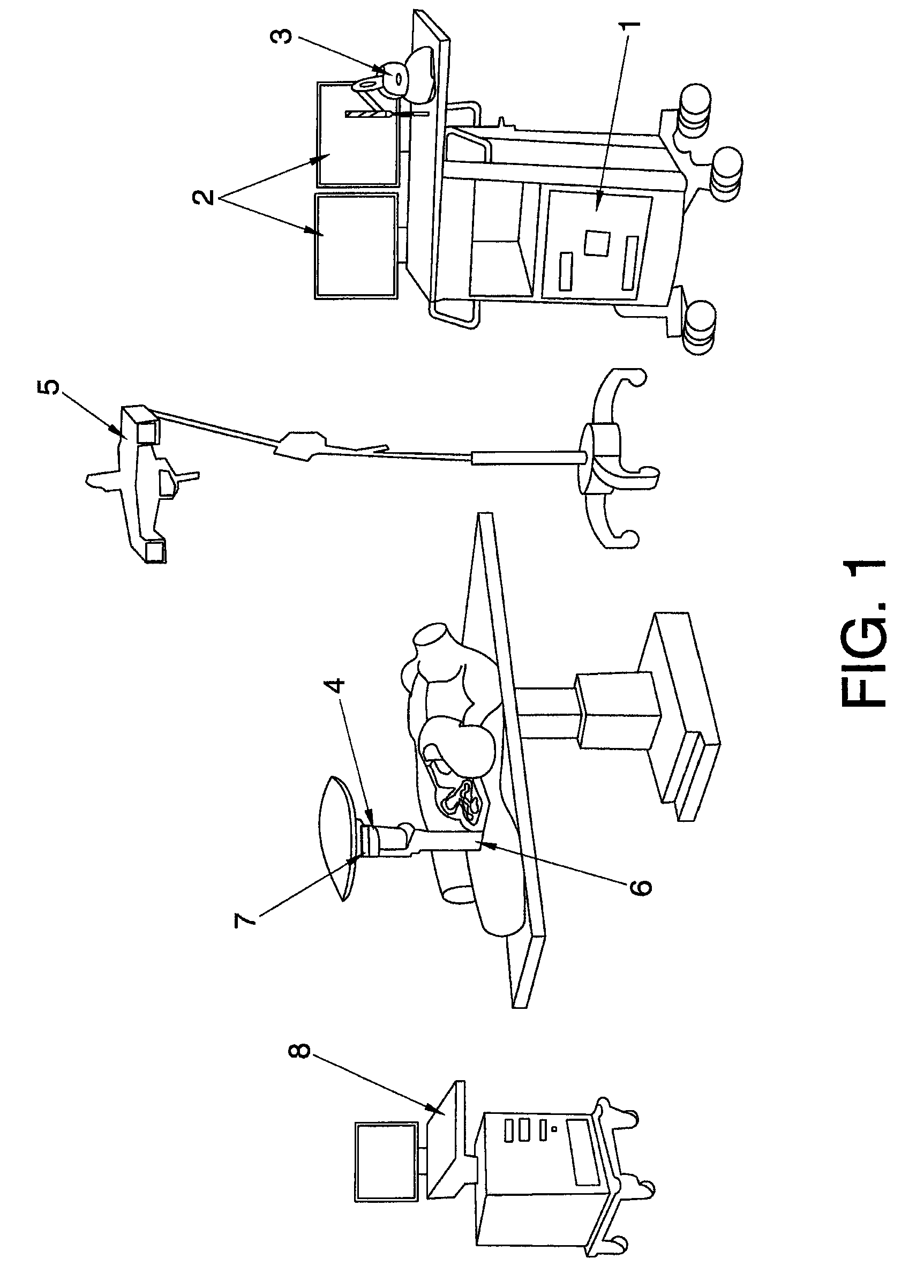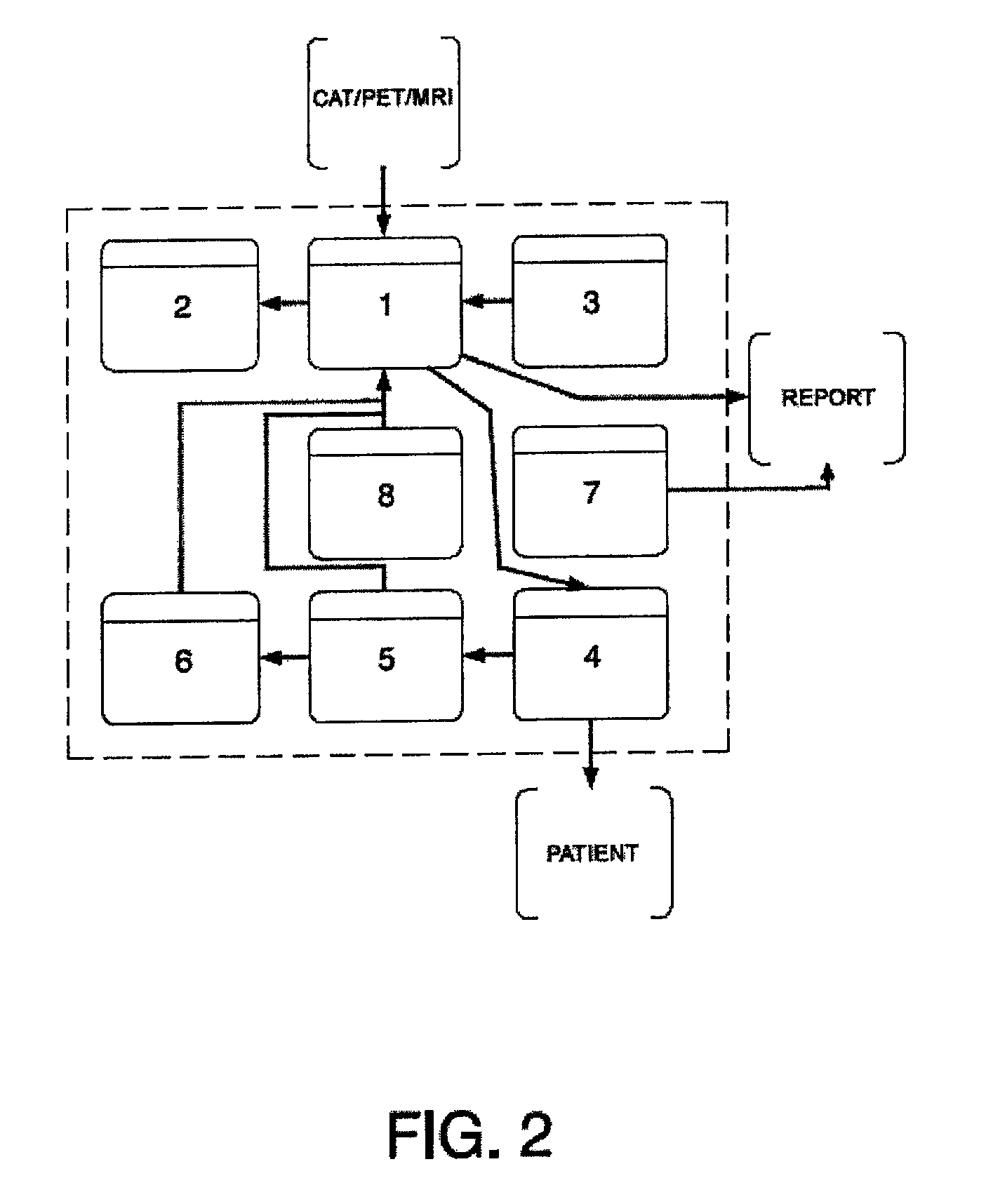Planning system for intraoperative radiation therapy and method for carrying out said planning
a radiation therapy and planning system technology, applied in radiation therapy, sensors, analog and hybrid computing, etc., can solve the problems of difficult estimation of modifications, difficult to measure the effect of dose measurement, and difficulty in the radiation therapy process
- Summary
- Abstract
- Description
- Claims
- Application Information
AI Technical Summary
Benefits of technology
Problems solved by technology
Method used
Image
Examples
Embodiment Construction
[0042]According to a preferred embodiment described in FIGS. 1 to 3, the planning system for intraoperative radiation therapy of the invention comprises at least one central processing unit or computer (1) for management and control of the rest of the devices, for executing the different software packages or modules responsible for generating the required simulations, for visually representing the patient's anatomy and the doses received, performing the different calculations etc.; devices responsible for representing images such as one or several monitors or screens (2), for example, in which the two-dimensional and / or three-dimensional images which the specialist can observe will be displayed, as well as peripherals responsible for gathering data relating to the actions performed by the user, simulating an actual surgical procedure, such as a computer mouse, a keyboard or haptic devices (3).
[0043]The system of the invention can further comprise a locating system (5) for locating e...
PUM
 Login to View More
Login to View More Abstract
Description
Claims
Application Information
 Login to View More
Login to View More - R&D
- Intellectual Property
- Life Sciences
- Materials
- Tech Scout
- Unparalleled Data Quality
- Higher Quality Content
- 60% Fewer Hallucinations
Browse by: Latest US Patents, China's latest patents, Technical Efficacy Thesaurus, Application Domain, Technology Topic, Popular Technical Reports.
© 2025 PatSnap. All rights reserved.Legal|Privacy policy|Modern Slavery Act Transparency Statement|Sitemap|About US| Contact US: help@patsnap.com



